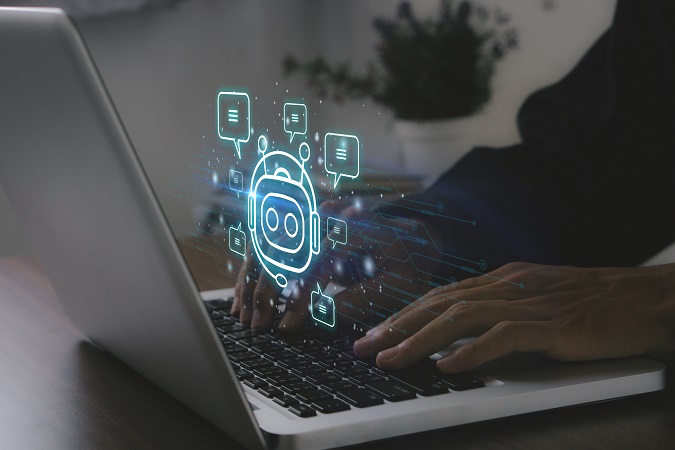Sandra Maura, CEO of TOPMIND, tells us that Artificial Intelligence tools can streamline processes in the healthcare field, help save costs and empower patients, transforming the operation of hospitals and the delivery of services.

The chatbot is already a reality in the customer service of many companies and constantly becomes more present in the most diverse sectors of the economy because it is a resource that optimizes customer service and customer experiences.
This technology fits perfectly into the pursuit of innovation as it is a global trend among companies aiming for Digital Transformation. This journey, which has been evolving in recent years, has now experienced a technological leap accelerated by the progress of Artificial Intelligence (AI) and the arrival of ChatGPT.
The virtual robots we are familiar with represent the beginning of utilizing AI resources and stand out for their ability to follow predefined commands. They are well-suited for answering questions and can perform service procedures that greatly accelerate the interaction between companies and customers. They were created and trained to speed up the execution of repetitive tasks, eliminating bureaucracy and allowing humans to focus on more strategic functions at work.
In hospitals, the benefits are numerous. By automating triage in emergency care, for example, the waiting time decreases, patients gain more autonomy in resolving minor issues and the hospital saves costs as well as the time of the attendants. Through chatbots, patients can make payments for consultations via messaging apps and expedite this process as well.
Bots are becoming increasingly popular and intelligent because they are powered by Machine Learning, besides being supplied with pre-set information.
It means the virtual assistant can improve its performance over time through the continuous information it receives and can be programmed to perform complex searches across multiple databases in seconds.
Now, with the arrival of ChatGPT being an advanced language model integrated with a chatbot, there can be further optimization of healthcare operations. In patient care, the chatbot can be programmed to provide information about medical procedures and offer more advanced responses to frequently asked questions. As it becomes even more advanced, it could even guide medications for specific needs.
The chatbot integrated with ChatGPT can help analyze the immense amount of medical data generated daily, such as patient records, test results, histories and diagnoses, supporting the patterns and trends identification related to the sector to aid in decision-making. With this, healthcare professionals and even governments can have a deeper understanding of the population’s health, enabling more effective action in cases of risks arising from the increase of a particular disease, for example.
Furthermore, AI can also assist medical teams in diagnosing patients with greater accuracy and speed, minimizing the incidence of medical errors. Training can help students and professionals improve diagnostic skills, techniques and procedures.
The evolution can even occur in the internal communication of hospitals and clinics, with employees using the technology for better communication on medical or administrative issues, with data collection for investigation purposes and creating histories that can potentially aid in more automated decision-making.
These innovations show that health and technology can and should go hand in hand. The goal of implementing these resources is not to replace the work of doctors or hospital staff, who remain essential in-patient care. The idea is to use this technology, which promotes agility and efficiency, as an ally to professionals inside and outside hospitals.
Today, through AI, patients can already schedule appointments, book exams and, when starting a consultation, provide health information in advance to the doctor, reducing the consultation time in the face of high demands.
The technology already shows its potential by freeing doctors to focus on patient care as an essential strategy for effective time management. In addition to being autonomous, the chatbot can handle multiple people simultaneously while maintaining service excellence.
With ChatGPT, we can take a step further to develop dialogues and solve more complex issues. This solution, which is constantly evolving, is perfect for organizations such as hospitals that seek to integrate their existing chatbots and take virtual assistance to a new level.
This technology can benefit various industries and, by having more knowledge, provides new perspectives for all business areas. The capacity is so great that it challenges companies to choose how they will explore all these functionalities.
Undoubtedly technology will transform all business sectors, including the healthcare industry, revolutionizing the operation of hospitals, patient care and service delivery. The market is rapidly moving towards a new phase of digital evolution. Fortunately, we will have many robots to help us revolutionize the methods and procedures we know today.
Click below to share this article

